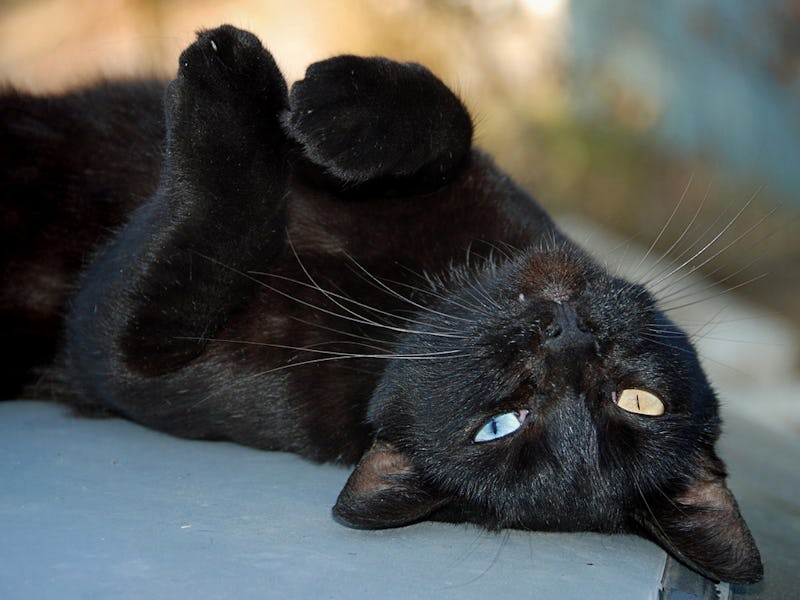Black Cat Day: Humans Have Hated Black Cats for a Very Long Time
Where did the black cat go wrong?

October 27 is National Black Cat Day in the United Kingdom — not to be confused with “Black Cat Appreciation Day,” which according to the American Society for the Prevention of Cruelty to Animals was August 17.
Today — along with August 17 — stands a bit apart from other made-up holidays celebrating animals because the black cat is the only animal to have its eyes gouged out in an Edgar Allen Poe story, be estimated to slaughtered by the tens of thousands in Italy, and be co-opted as a mascot of the Industrial Workers of the World. We have hated black cats for a very long time.
Where did the black cat go wrong? Cats, the inky-coated varieties included, had a fairly decent run in ancient history — beloved in Egypt, luxury pets in Rome — until Western Civilization entered its deeply paranoid Christian phase in the Middle Ages.
Pope Gregory IX had it in for black cats from the get-go.
In what now sounds like bad furry fan fiction, Pope Gregory IX declared in a papal bull in 1233 that Satan would take the form of a black cat, or a very hairy man, or a toad, in order to participate in heretical orgies.
Views on cats took a particularly bleak turn during the mid-1300s. Right around the time the Black Plague broke out, a revival of the Norse goddess Freya — whose chariot was pulled by cats — may have soured the pagan-fearing populace toward the cat. The black cat would morph from beneficial mouse-killer (which would have been a good thing to have during the Bubonic Plague) into the familiar of devils and witches, and ultimately be torched by the load in 17th century Paris.
By the 1800s, we’d cooled a bit on witches, but a review of late-19th century Maryland folklore revealed black cat tales that ran the gamut from the bizarre:
“Take your undergarment off at Halloween, wash it backwards, dry it backwards, and then sit down before the stove backwards without speaking; and if you are to marry, you will see your future husband come down the steps. If you are not to marry, you will see a black cat come down the steps, followed by four men carrying a coffin.”
To the fearful:
“Black cats are to be dreaded. Once in Anne Arundel County, the crews of seven shifting engines stopped work to kill a black cat seen in the yard.”
To swinging back toward good kitties:
“The blood from a black cat’s tail cures warts.”
“A black cat or any kind of cat coming to your house is good luck.”
Did people actually believe this? In 1919, 9 percent of college students surveyed at the University of Oregon believed black cats were superstitious. Today, superstitions echo through scattered adoption centers in the United States — you might not be able to adopt a black cat in late October, thanks to rumors of Halloween torture. The ban isn’t everywhere — and there’s no evidence people are out there abusing black cats in the spirit of Satan or sadism.
The most pernicious things about black cats that endures today is the idea they don’t photograph well — nothing an Instagram filter can’t cure — and that outdoor cats wreak environmental havoc on birds and other small animals. Which, with an annual avian kill count in the billions, is the true reason we need to get a better handle on our wayward felines.